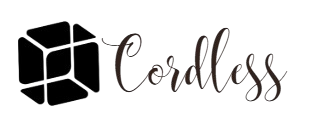Begin With Recovery, Not Just Resilience
Most advice jumps straight to toughness. Instead, think about recovery the way athletes do. The work matters, but the interval between efforts is where you rebuild. Life’s difficulties arrive in sets and reps. When you plan your recovery as carefully as your effort, you bounce back faster and stronger. This approach turns coping into a repeatable skill rather than a frantic scramble when things go wrong.
Name the Stress You Can See
You cannot change what you have not named. Write down three patterns that repeatedly drain you. Maybe it is late night scrolling, conflict at work, or money worries after the fifteenth of the month. Do not judge the list. Treat it like a weather report. When finances feel stormy, you might be tempted to make fast decisions, such as searching for a title loan in San Tan Valley. The aim here is not a verdict on any choice. The goal is to notice your trigger points so you can prepare healthier responses before stress spikes.
Build a Two Minute Reset
A coping plan needs a first move that fits anywhere. Try this simple sequence. First, lengthen your exhale for six slow breaths to tell your nervous system that the threat has passed. Second, relax your jaw and drop your shoulders. Third, look at one still object for ten seconds to anchor your attention. This tiny circuit takes about two minutes, and it lowers the intensity enough to choose your next step with a clear head.
Create a Personalized Coping Menu
You will not always want the same tool. Make a short menu organized by situations. For high energy stress, like anger or panic, include fast walks, wall pushups, or a quick tidy of the nearest space. For low energy stress, like sadness or fatigue, include a warm drink, a short nap if possible, or a playlist that lifts your mood. Include at least one social option, like sending a short voice note to a friend. Keep the list on your phone so you do not need to think when you are overwhelmed.
Practice in Calm Moments
Coping mechanisms are like evacuation routes. You do not want to learn them during a fire. Pick two tools from your menu and rehearse them at low stakes times. Breathe for two minutes after lunch. Do your fast walk loop after a meeting even when you feel fine. Rehearsal turns skills into reflexes. When a real challenge arrives, you will not be starting from zero.
Move Your Body to Move Your Mood
Physical activity is one of the most reliable ways to change your stress chemistry. You do not need a long workout to benefit. Ten to fifteen minutes of brisk movement can shift your mental state and reduce the urge to cope in less helpful ways. If you want a simple target for weekly movement, the Centers for Disease Control and Prevention outlines clear, attainable guidelines for adults. You can review the CDC’s physical activity recommendations to set a baseline that fits your life.
Use Environment Design as a Quiet Superpower
Your surroundings nudge your choices. Make the healthy choice the easy one. Place a water bottle on your desk so you drink before the afternoon slump. Keep a book within reach of the couch to reduce aimless scrolling. Put a yoga mat where you tend to pace when you are irritated. Move snacks you overeat to higher shelves. These small shifts remove friction from good options and create gentle speed bumps in front of the ones that usually do not help.
Set Boundaries That You Can Keep
Grand declarations often fail. Choose boundaries you can honor on your hardest day, not your best one. A few examples. No serious conversations after ten at night. No email during the first thirty minutes of the morning. A five minute pause before sending any message you wrote while upset. Boundaries that stick build trust with yourself, and that trust becomes a strong coping base.
Make Sleep Part of the Plan
Many coping failures start with fatigue. Protecting sleep is not a luxury. It is a vital tool. Give yourself a wind down period that does not include screens, keep your room dark and cool, and aim for steady bed and wake times. If you want a simple primer on why this matters and how to make progress, the National Institutes of Health offers accessible guidance on sleep health and routines. Start with the NIH’s overview of healthy sleep basics and choose one change to try this week.
Use Language That Lowers the Temperature
Words shape your experience. Swap absolute phrases for flexible ones. Instead of I always mess this up, try I am learning to handle this better. Instead of Everything is falling apart, try One part of my day went sideways and I can repair it. This is not about pretending everything is fine. It is about describing events in a way that leaves you room to act.
Adopt Micro Plans for Big Emotions
When emotions surge, large goals feel impossible. Give yourself micro plans that require five minutes or less. If you are anxious, clean the sink and drink a glass of water. If you are angry, set a timer and write everything you want to say, then wait ten minutes before sending anything. If you are sad, step outside for one minute of sunlight and text a friend one sentence about your day. Each micro plan moves you one inch in a helpful direction.
Build a Support Map, Not Just a Contact List
Support is more than having names in your phone. Make a map of who helps with what. One friend is great for practical problem solving, another is perfect for listening, and a third makes you laugh. Add at least one professional resource, such as a counselor or a support group. When trouble hits, you will know exactly whom to reach and for which kind of help. That clarity shortens the distance between stress and relief.
Choose Healthier Substitutes for Common Escapes
People often cope by numbing out. Instead of trying to quit every escape at once, create substitutes that offer similar relief with fewer downsides. Trade doom scrolling for a short, upbeat video playlist you curate in advance. Swap late night snacking for a cup of tea and a small portion of something satisfying. Replace a second drink with a nonalcoholic option you actually like. Over time, these swaps add up to a big change in how you feel the next morning.
Reflect Without Dwelling
A short weekly check in can deepen your toolkit. Ask three questions. What stressor did I handle well. Which tool helped the most. Where did I get stuck. Choose one small adjustment for the next week. Reflection gives you progress without the spiral of overthinking.
Know When to Escalate Your Care
Coping mechanisms are powerful, and sometimes you need more support. If you notice persistent changes in sleep, appetite, energy, or interest in daily activities, consider speaking with a healthcare professional. The American Psychological Association provides practical guidance on finding a therapist and what to expect from treatment. Their resource on starting therapy and selecting a provider can help you take that step with confidence.
Keep a Record of What Works
When you find a tool that consistently helps, capture it. Create a short note titled Bad Day Playbook and list your best moves. Add the songs that lift you, the stretches that calm you, and the names of people who make you feel supported. In a tough moment, you will not need to invent a strategy. You will have one ready.
Closing Thought
Developing healthy coping mechanisms is not about winning a single battle. It is a practice of steady recovery, clear boundaries, and small tools that you rehearse long before you need them. Start with a two minute reset, keep a flexible menu, and design your environment to support good choices. With repetition, you will feel stronger in the hard moments and more present for the good ones, which is the real point of coping well.

